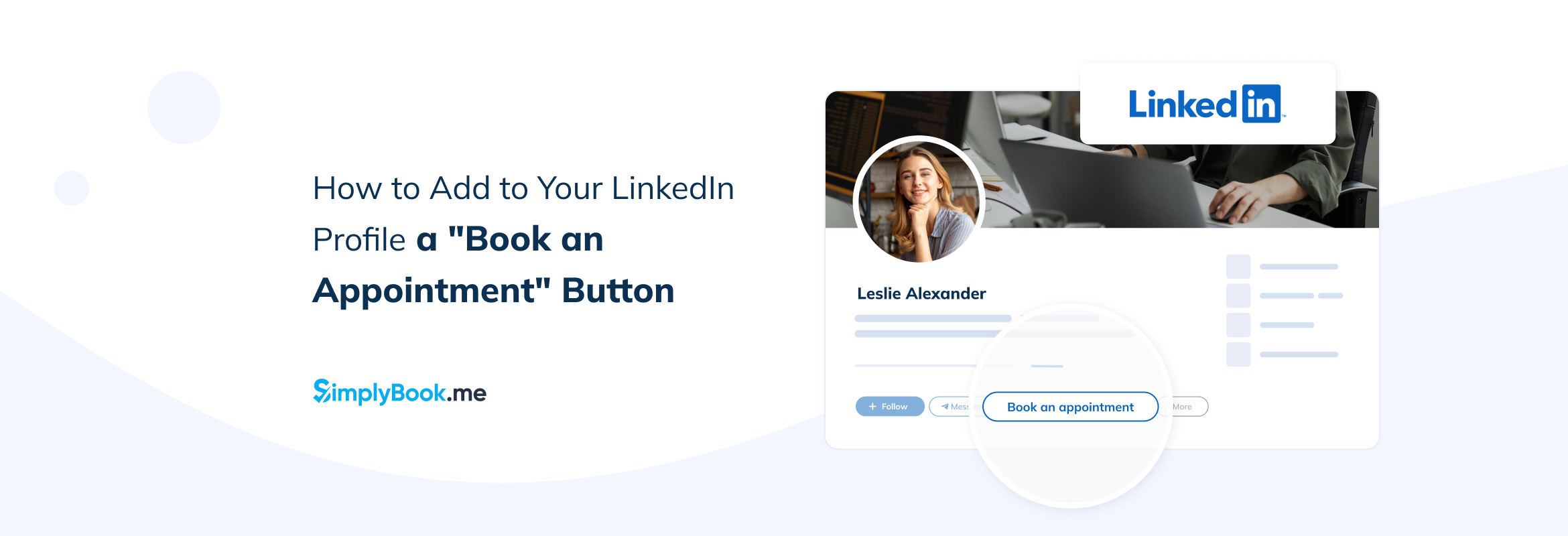8 Marketing Tips for Generating Trust with Your Audience

This post is also available in:
![]()
![]()
![]()
![]()
When deciding what marketing strategies to employ, most business owners focus on going after measurable outcomes that deliver benefits within a short timeframe. But the thing is, tangible results aren’t the only ones that matter when aiming to build up a strong brand. Sometimes, putting time and effort into producing something more abstract can deliver much more value than a short-term increase in revenue or an influx of new followers on social media. If you’re looking to focus your marketing activities on concepts that genuinely matter, it’s not a bad idea to concentrate on generating trust with your audience. It will continue to benefit your business for a long time to come.
Investing in your brand’s trustworthiness directly impacts brand perception, conversion rates, customer loyalty, and advocacy. It may also be the secret ingredient that aids customer acquisition efforts without increasing your marketing budget.
If these outcomes sound like something your business could benefit from, the following are the eight best marketing tips to generate trust with your audience.
Highlight Social Proof Early On
One of the easiest ways to build brand trust is to display social proof.
But there’s a catch. Most marketers save social proof for the final stages of the buyer’s journey. Typically, they display ratings and reviews on product pages. They’re supposed to push web visitors to convert by reassuring them that their research and decisions were correct and that they’ll be happy with their purchase.
And sure, displaying such elements at the decision stage of the customer journey does significantly boost sales. However, that doesn’t mean you shouldn’t also use social proof earlier in the buyer’s journey.
Employing social proof in the early stages of the buyer’s journey is a superb tactic for marketers who want to ensure their prospects form a positive perception of their brands from the first interaction. And the great thing is it’s relatively easy to accomplish.
For instance, the Brakes To You website includes the sentence “Thousands of five-star reviews” in its website header, knowing that people looking for this type of service tend to prioritize safety, brand reliability, and a satisfactory customer experience.
You could also apply this tactic to your social media profiles, as FlexiSpot did. This brand regularly re-posts images from its ambassadors’ social media profiles. Basing their reasoning on the fact that 36% of consumers say influencer marketing is effective at getting them to try new products.
Think Beyond Written Content
Another thing to remember while generating trust in your brand is that written content isn’t the only way to prove your brand’s reliability and credibility.
Written content, especially blog posts and guest articles, can help prove your expertise and get potential buyers to consider your offer. But you can achieve similar results with more exciting content formats as well.
When taking the time to produce informative resources your audience will find helpful during their buyer’s journey, you are actively generating trust in your business. Moreover, investing in engaging content formats can help you prove that you’re willing to prioritize your audience’s needs. And it might even be the best way to deliver value to your followers while securing a high ROI, thanks to choosing engaging formats.
Now, if these outcomes align with what you want to achieve with your content marketing strategy, there are a few highly-engaging formats you should explore to generate trust in 2022.
Video
According to HubSpot’s State of Marketing Trends Report 2022, video was the most-used media format last year, with almost 60% of marketers investing in it.
However, there’s one specific type of video that’s been picking up steam — mainly thanks to the popularity of TikTok — short-form video.
So, if you’re looking for media types that will allow you to reach and engage your audience and build trust, you should consider investing in video production.
Look up to brands like Todoist. This company regularly supplements its written articles with images, screenshots, and short videos. The approach is super effective at enhancing the overall user experience. It increases the viewers’ chances of understanding the message, receiving value from the post, and forming a positive view of the company, thinking of it as a brand they can trust.
Infographics
Slightly less resource-intensive than video but still highly effective when aiming to distribute content that generates trust, infographics are an excellent choice for most marketers. Seeing that they combine the power of text (yes, more and more people trust the information they read online), visuals (which aid comprehension and knowledge retention), and statistics, it’s no surprise that infographics hold a lot of potential.
If you want to utilize them in your content marketing strategy to generate trust in your brand, ensure that you don’t just combine loose claims with appealing images. Instead, do your best to present your audience with valuable, original, and (most importantly) fact-checked data so that they know they can rely on your organization for transparency and start seeing you as a dependable source of info in the future.
For a great example of an infographic that’s both engaging and trust-driving, check out the Writing Showdown by Grammarly. Note how, at the bottom, it includes a section dedicated to the research methodology, proving that the data presented in the graphic isn’t just made up but based on real-world experience.
Interactive content
Finally, don’t forget about interactive content as you venture to employ media formats that can generate trust but are more engaging than simple text. This is a great format to use in 2022. It presents your audience with information in a way that you’ve tailored to their interests (and can even filter out irrelevant info, allowing you to cash in on the benefits of personalization).
So, if your goal is to produce insightful resources that solve specific consumer pain points, consider whether interactivity may help you do this in a way that is better and more attractive than your competition’s approach.
Just check out the Macro Calculator created by Transparent Labs, an essential tool for all fitness enthusiasts that allows them access to valuable information based on their personal lifestyle, habits, and nutrition preferences.
Make Reasonable and Measurable Claims
One of the best ways to harm your brand’s reputation and position your company as untrustworthy is to promise the audience results you can’t deliver. Yet many marketers still fall into the trap of sacrificing transparency and honesty to make a quick sale.
Fortunately, fixing this mistake is relatively easy. Commit to only making reasonable and measurable claims.
Instead of making abstract or vague promises, aim to be precise. Tell website visitors what they can expect to gain from investing in your products/services, and give them benchmarks regarding what results to count on.
Hootsuite does this spectacularly by including key statistics on its landing page. These pieces of data don’t lead to unmeetable user expectations, which is what you avoid when aiming to build trust. Nonetheless, they still do a superb job of highlighting the brand’s value and showing its audience why investing in social media matters when running a business.
If you fear this direction is too direct, you can still achieve a similar effect by skipping over the stats and listing your offer’s benefits. Take a look at how Loom does it:
Publish UGC That Features Your Products
If you look at Edelman’s annual Trust Barometer report, you’ll see that the spokespeople consumers trust the most include scientists, fellow brand users, and brand experts. With this in mind, it’s only logical that you should aim to employ user-generated content in your marketing efforts.
Moft does this rather well, using its eCommerce store and Instagram feed to share user-submitted images of its products.
On the one hand, this shows the aesthetic appeal and versatility of Moft products, designed to give people flexibility regarding where and how they work. But, more than that, including UGC in its marketing strategy also allows this brand to prove it has many satisfied customers, making it much easier for potential buyers to trust it to deliver a high-quality product.
Showcase Earned Media
Any mention of your business or products you haven’t paid for counts for earned media. And research shows that it can be incredibly efficient for generating trust with your audience. There are two main reasons why earned media drives audience trust.
On the one hand — as we’ve already mentioned — most people trust what they read online. But even more importantly, earned media has the advantage of being authentic.
According to research from TINT, 78% of consumers know when a brand is advertising to them. And 61% of online shoppers don’t trust or have a neutral view of paid advertising, which shows how essential it is for your business to look for organic ways of generating trust.
The good news is that there are specific authoritative publications that your audience already views as trustworthy. And, if it just so happens that your company or products have earned a mention in those publications, you can easily position your brand as equally reliable by simply piggybacking on their reputation.
For instance, a quick look at the MarketBeat website shows how simply you can build trust by showcasing earned media. All you have to do is display the logos of the publications that have written about your company.
If you want to take things further, you could link to specific articles that mention your brand or embed relevant videos about your products. Howeverememberind that those are just extra content for your audience to consume. And, if the links lead web visitors away from your site, they could harm your conversion rates, especially if you’re targeting customers in the bottom stages of the buyer’s journey.
Tell Customer Stories with Case Studies
When trying to convince your audience about your brand’s trustworthiness, one of the most effective things you can do is share instances in which your team or products solved customer pain points.
There are two ways of doing this.
On the one hand, you can display reviews on your website. With this approach, you allow existing clients to describe the value they received from investing in your brand’s offer and cash in on the benefits of using old-school social proof to drive trust.
Alternatively, you can go in a slightly more advanced direction with case studies. These examples of content map out the customer path from problem awareness to solution and give you a chance to highlight the specific value you can deliver to your potential clients.
The great thing about case studies is that they’re ideal when targeting fellow businesses and professional users. However, to ensure you get the most out of them, you must adhere to a few ground rules:
- Make the study attractive by writing a descriptive headline followed by a detailed subtitle.
- Use the topmost section of the page to show what your solution did and what outcomes you were capable of achieving.
- Lower down on the page, ensure that you’ve introduced your client, their pain points, and the specific problem they wanted to solve.
- Include an instance of social proof at the end of the case study to reassure prospects that these are real gains enabled by your services (and not just wishful thinking on your content team’s part).
For an excellent example of a case study that does all this, check out this one from Airtable.
Validate Your Content
Research shows that paying attention to information quality represents one of the most effective ways businesses can build trust. However, validating your claims is a good idea even if your content marketing strategy empowers your audience with knowledge.
By sharing your team’s expertise and proving that your writers/ambassadors/spokespeople know what they’re talking about, you can effectively underline your brand’s authority and drive your audience to put their faith in your business. And the great thing is that there are multiple ways of doing this.
For example, Sleep Junkie includes “Fact checked” and “written by” certification badges on its blog posts. . Moreover, medical professionals review the guides, and readers can access their bio by hovering over the green checkmark. If that’s not enough, potential buyers can deep dive into the brand’s fact-checking standards and processes. They are clearly stated to encourage readers to see the business as reliable, transparent, and trustworthy.
Alternatively, if you’re looking for methods to validate your claims on landing pages, you could follow SharpSpring as an example. They display third-party certification badges on their site, showing that it is an industry leader in marketing automation solutions.
Leverage Your Team’s Credibility
Lastly, as you work towards generating trust with your audience, don’t forget that the most powerful asset for your organization is your team.
After all, if people trust experts as much as research suggests, why not leverage your team’s credibility to impact your brand’s reputation positively?
By being vocal about your employee’s achievements and knowledge, you can show your audience that they can rely on your business to deliver exceptional results thanks to an experienced and dedicated approach.
Check out how Digitarial Agency does this on its homepage.
The brand highlights its trustworthiness by sharing each team member’s experience. Furthermore, it validates its credibility by including LinkedIn links to each person’s profile on the site’s Team page. This gives web visitors a valuable opportunity to check out the people they might collaborate with and see that they are genuine experts in their field.
In Closing
Brand trust is not a metric you’ll be able to measure with a glance at your Google Analytics account. And even more, it won’t be a sentiment you can quickly achieve with a few marketing tricks.
However, if you play your cards right, you’re guaranteed to profit from your efforts by continually investing in building and maintaining brand trust.
After all, markets are rapidly expanding. Consumers have an increasing number of choices for every buying decision they will ever have to make. Experience shows buyers are pickier than ever. They demand that businesses and organizations they choose also uphold values that weren’t even a concept 10 or 20 years ago.
To ensure success and longevity, generating trust and a positive brand image is something you truly need to focus on. The good news is that it’s not that difficult, as long as you know where to start. The eight marketing tips listed in this guide are a superb starting point. However, for optimal results, you can’t rely on trust alone. Don’t forget to supplement your marketing with a next-level shopping experience, a customer-first approach to business, and a willingness to improve and evolve your company practices continually.



Comments
0 commentsNo comments yet